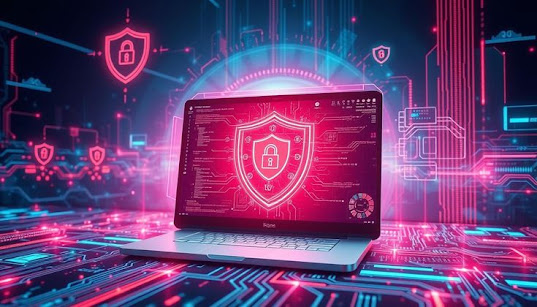AI vs. AI in Cybersecurity: When Defenders and Hackers Both Use Machine Learning
AI vs. AI in Cybersecurity: When Defenders and Hackers Both Use Machine Learning
In 2025, cybersecurity is no longer a battle of humans vs. machines. It’s machines vs. machines. As artificial intelligence (AI) and machine learning (ML) have become deeply embedded in digital infrastructure, both defenders and attackers are leveraging their capabilities.
1. The Evolution of Cyber Threats
Traditionally, cyberattacks relied on human ingenuity: phishing emails, social engineering, password brute-forcing, etc. But now, AI-generated attacks can analyze targets, craft personalized lures, and launch attacks at scale within seconds.
a. Why AI Became a Weapon
- Automation: AI can launch thousands of attacks in parallel.
- Adaptability: AI systems adjust based on defenses they detect.
- Data Leverage: Using stolen or open-source data to mimic real users.
Modern attackers are not writing malware line by line — they’re training models. That means defenders have to think differently too.
2. AI for Cyber Defense: The Good Side
Organizations are deploying AI in cybersecurity for rapid detection and real-time response. A few major areas include:
a. Threat Detection and Prediction
Using AI, security systems can monitor millions of network events and find anomalies that indicate threats. These tools do not wait for signatures — they detect based on behavior.
For example, AI can detect if an employee’s login behavior changes unusually, even before a breach occurs.
b. Automated Incident Response
Rather than waiting for human analysts, AI tools can quarantine devices, block IP addresses, and roll back system changes autonomously. Time is crucial — and AI buys that time.
c. Fraud and Bot Detection
Financial platforms now use AI to spot suspicious transactions and distinguish human users from bots. Models learn customer behavior patterns and flag anomalies instantly.
3. AI for Attacks: The Dark Side
Unfortunately, the same tools are being turned against us. Hackers now train their own AI models to launch smarter, stealthier attacks.
a. AI-Powered Phishing
Gone are the days of generic Nigerian prince scams. Today, phishing emails are grammatically perfect, contextually relevant, and emotionally triggering — all AI-generated.
Attackers scrape social media, breach databases, and use that data to train AI that writes highly personalized emails. It works alarmingly well.
b. Deepfake Attacks
Voice and video deepfakes have entered the corporate world. Hackers create fake CEO videos asking for fund transfers — and it’s working.
In one reported case, an AI-generated voice call mimicking a European executive led to a $250,000 wire transfer — no humans involved on the attacker’s end.
c. AI-Enhanced Malware
AI malware adapts in real-time. It changes its behavior based on the environment, making detection far more difficult. It can even disable antivirus software intelligently.
4. The Battlefield: Defender AI vs. Hacker AI
We are now witnessing an arms race — where each side is building smarter systems to outwit the other.
a. Attack Simulation by AI
Red teams now use AI to simulate what an intelligent attacker would do — predicting weaknesses before a real hacker finds them.
b. AI vs. AI Skirmishes
In some cases, defensive AI is trained to detect behavioral patterns from offensive AI. This results in a kind of virtual duel where two models battle in cyberspace — constantly evolving.
5. Examples of AI vs. AI in 2025
a. Cloud Security Platforms
Major providers like AWS and Microsoft now include AI-based attack response systems that identify machine-driven threats within milliseconds.
b. Nation-State Cyberwarfare
Countries like China, the U.S., and Russia are reportedly developing autonomous cyber units — not just soldiers, but bots trained to hack or defend infrastructure.
c. AI Bug Bounty Systems
Companies are now using AI tools that continuously scan their own codebases, much like white-hat hackers would — but 24/7, and faster.
6. Challenges in the AI Cyber War
a. Data Poisoning
If attackers can corrupt the data used to train AI defense systems, they can create blind spots. This is known as data poisoning — and it’s becoming more common.
b. Model Theft
Hackers are now stealing trained AI models and repurposing them for malicious goals. Protecting intellectual property of models has become a new priority.
c. Explainability
Security teams often don’t understand why an AI model made a specific decision. This lack of transparency can be dangerous when critical systems are involved.
7. The Future of AI Cyber Defense
Despite the threats, defenders are becoming more creative:
- Federated Learning: Sharing model updates without exposing data helps train global security models.
- Zero Trust Architectures: No device or user is inherently trusted. AI verifies every access point.
- AI Auditing Tools: Designed to evaluate and flag bad behavior in other AI models.
The key is not just building smarter AI, but also keeping it ethical, transparent, and robust.
8. What Can You Do as a Professional or Individual?
a. Stay Updated
AI in cybersecurity changes monthly. Subscribe to security journals, blogs, or newsletters that cover this fast-evolving space.
b. Use AI Tools Wisely
Deploy AI-based antivirus, behavior-based firewalls, and endpoint detection systems even for personal use.
c. Educate Teams
In organizations, every employee should know the basics of AI-powered threats. Cybersecurity is now a company-wide responsibility.
Conclusion
AI vs. AI in cybersecurity is not science fiction — it is the daily reality of 2025. Attackers are no longer solo hackers in hoodies; they’re running neural networks. Likewise, defenders are not just writing rules — they’re training defense systems that learn, adapt, and fight back.
We’re entering an era where cybersecurity is a dynamic battlefield of algorithms. The faster, smarter, and more ethical AI wins. But it’s a war that will never have a permanent winner — only temporary victories.
The question is — is your AI ready to defend your world?




Comments
Post a Comment